
Quick Tips
- Clean steel with good old fashioned water.
- Cleaning steel that is extra grimy.
- Cleaning rusty steel.
- Drying clean steel.
- Protect your steel from further oxidation.
- Storing clean steel.
“Steel” is a very broad term. There are hundreds of different types of steel that vary widely in grade and alloy composition. The oldest and most basic of these is the combination of iron with trace amounts of carbon (generally less than two percent of the final product). Ancient steel objects of this composition have been discovered and dated back to around four thousand years ago. This, coupled with the fact that steel is still widely produced today, is a testament to how useful the metal is.
More often than not, the steel alloys we use today are slightly different than those of old. Don’t get me wrong, it’s still a good recipe and is often used in the modern production of things like pots and pans (cast iron), tools (axes, shovels, etc.), fences, and carbon steel blades. We’ve learned, however, that by toying with the alloy and adding different metals such as vanadium, chromium, manganese, nickel, and/or tungsten to the iron and carbon, stronger, smoother, and shinier results can be achieved. This is exactly the case with stainless steel. This immensely popular steel alloy contains about 11% chromium. If this is what you are looking to clean, please check out the article How to Clean Stainless Steel for specific stainless steel cleaning instructions. If, on the other hand, you are looking to clean steel of a different composition, continue on with this article. I consider the methods for cleaning steel found in this article to be “all purpose” and not alloy-specific. Use these steel cleaning tips for steel appliances, steel fences, steel furniture, steel grills, steel pots and pans, steel silverware, steel sculptures, steel tools, and any other steel items you may have.
Cleaning Steel with Household Items
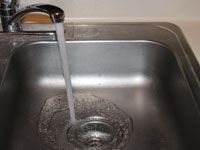 Clean steel with good old fashioned water. You will be surprised at how effective plain water is at cleaning metals such as steel. Hot water plus a rag plus some elbow grease equals clean steel. More often than not, the only thing making your steel look dirty is dust and dirt. If you’re trying to clean steel objects that are small enough to fit in the sink or tub, give them a quick soak, wipe them down with a rag, and make sure to get in the crevices with an old soft toothbrush. If it’s a large item, fill a bucket with hot water and start scrubbing.
Clean steel with good old fashioned water. You will be surprised at how effective plain water is at cleaning metals such as steel. Hot water plus a rag plus some elbow grease equals clean steel. More often than not, the only thing making your steel look dirty is dust and dirt. If you’re trying to clean steel objects that are small enough to fit in the sink or tub, give them a quick soak, wipe them down with a rag, and make sure to get in the crevices with an old soft toothbrush. If it’s a large item, fill a bucket with hot water and start scrubbing.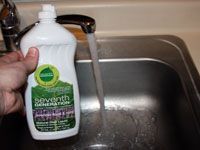 Cleaning steel that is extra grimy. If plain hot water isn’t going to cut it, try adding a bit of dish detergent to your steel cleaning solution. This works very well for cleaning steel pots, cleaning steel pans, cleaning steel appliances, cleaning steel tools and cleaning anything else that has a tendency to come into contact with cooking grease or petroleum products. If the grease/oil buildup is really, really bad, go ahead and add a couple tablespoons of ammonia to your soapy water. Still not doing the trick? Make a paste of baking soda and water, and rub it gently onto the trouble spots with a rag. Baking soda paste is slightly abrasive and should take off anything the cleaning solution couldn’t.
Cleaning steel that is extra grimy. If plain hot water isn’t going to cut it, try adding a bit of dish detergent to your steel cleaning solution. This works very well for cleaning steel pots, cleaning steel pans, cleaning steel appliances, cleaning steel tools and cleaning anything else that has a tendency to come into contact with cooking grease or petroleum products. If the grease/oil buildup is really, really bad, go ahead and add a couple tablespoons of ammonia to your soapy water. Still not doing the trick? Make a paste of baking soda and water, and rub it gently onto the trouble spots with a rag. Baking soda paste is slightly abrasive and should take off anything the cleaning solution couldn’t.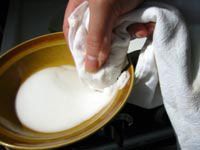 Cleaning rusty steel. There are a number of very effective natural methods for cleaning steel that’s rusty. The idea behind all of them is to remove the rust completely so that it doesn’t continue to eat away at your steel. If the layer of rust is thin enough, you should be able to remove it either by scouring it with baking soda paste or soaking it in straight white vinegar. If something a little stronger is required, citric acid works great for removing rust from steel. Simply dip a wet rag into the citric acid, move it to the steel, and start scrubbing. In severe cases, you may need to use steel wool, a steel brush, or even a grinder to remove the rust.
Cleaning rusty steel. There are a number of very effective natural methods for cleaning steel that’s rusty. The idea behind all of them is to remove the rust completely so that it doesn’t continue to eat away at your steel. If the layer of rust is thin enough, you should be able to remove it either by scouring it with baking soda paste or soaking it in straight white vinegar. If something a little stronger is required, citric acid works great for removing rust from steel. Simply dip a wet rag into the citric acid, move it to the steel, and start scrubbing. In severe cases, you may need to use steel wool, a steel brush, or even a grinder to remove the rust.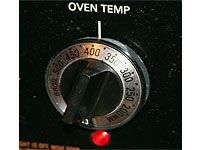 Drying clean steel. Once your steel is clean and you’ve made certain to rinse off any traces of whatever you used to clean it with, be sure to dry it as quickly as possible. This is especially important for steel objects that have a tendency to rust. Immediately wipe the object down with a towel. If it’s a large steel object, use several towels so you’re always using a clean one. If it’s a smaller object, dry it with heat. After you’ve gone over it with a towel, stick it in a hot oven (around 400°F) for about 15 minutes. Just don’t burn yourself taking it out.
Drying clean steel. Once your steel is clean and you’ve made certain to rinse off any traces of whatever you used to clean it with, be sure to dry it as quickly as possible. This is especially important for steel objects that have a tendency to rust. Immediately wipe the object down with a towel. If it’s a large steel object, use several towels so you’re always using a clean one. If it’s a smaller object, dry it with heat. After you’ve gone over it with a towel, stick it in a hot oven (around 400°F) for about 15 minutes. Just don’t burn yourself taking it out.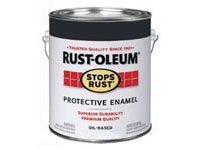 Protect your steel from further oxidation. The very moment your steel is dry (and cool enough to handle) you need to protect it from further oxidation. There are a number of ways to do this. If it’s a piece of steel furniture or something that is intended for outdoor use, a metal primer and rust protectant should be applied. Just swing through a hardware store and see what they suggest. More than likely, they will tell you to use Rustoleum. If you want a more natural option, consider using linseed oil, carnauba wax, or even olive oil. Just keep in mind that these, even if used for indoor items, will require frequent reapplication.
Protect your steel from further oxidation. The very moment your steel is dry (and cool enough to handle) you need to protect it from further oxidation. There are a number of ways to do this. If it’s a piece of steel furniture or something that is intended for outdoor use, a metal primer and rust protectant should be applied. Just swing through a hardware store and see what they suggest. More than likely, they will tell you to use Rustoleum. If you want a more natural option, consider using linseed oil, carnauba wax, or even olive oil. Just keep in mind that these, even if used for indoor items, will require frequent reapplication.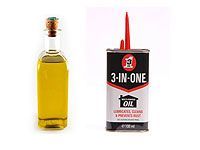 Storing clean steel. For steel objects that live outside, there’s not a whole lot you can do. Regardless of where you put them, they will be subject to the elements and you’ll just have to be diligent about protection. For smaller items, however, there are things that can be done. If we’re talking about something with a blade (ax, knife, scissors, etc.) just make sure to oil after every use. Same with pots and pans. Grease ’em up with a little Crisco, vegetable, or olive oil before sticking them back in the cupboard. For items such as steel jewelry, store them in a box with a silica gel packet or two. The most important thing to remember is to do the best you can to store clean steel in a cool, dry place when not in use.
Storing clean steel. For steel objects that live outside, there’s not a whole lot you can do. Regardless of where you put them, they will be subject to the elements and you’ll just have to be diligent about protection. For smaller items, however, there are things that can be done. If we’re talking about something with a blade (ax, knife, scissors, etc.) just make sure to oil after every use. Same with pots and pans. Grease ’em up with a little Crisco, vegetable, or olive oil before sticking them back in the cupboard. For items such as steel jewelry, store them in a box with a silica gel packet or two. The most important thing to remember is to do the best you can to store clean steel in a cool, dry place when not in use.
Avoid Commercial Steel Cleaners When Possible
I’m not going to name any names here. There’s no need. A quick Google search for “steel cleaners” will show you a plethora of different products for cleaning steel. If you are interested in a particular brand, do another Google search with the product name plus “active ingredients.” What you will find is that most (certainly not all) of these steel cleaners are plumb full of petroleum distillates. Oftentimes they will be listed simply as petroleum distillates. However, you also need to keep an eye out for substances such as mineral spirits and paraffin oil. These are also petroleum distillates. Sodium hydroxide is another common ingredient commonly found in steel cleaners. This is a really nasty base that can cause chemical burns and irritate the entire respiratory system if inhaled. Monoethanolamine (MEA) is another chemical commonly found in products for cleaning steel that you should be wary of. Although it is a weak base, it can still cause burns to the skin and eyes, and if inhaled or absorbed through the skin, it can cause damage to the lungs, kidneys and liver.
Natural & Organic Steel Cleaners
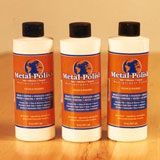 Homewood Metal Polish cleans and polishes a wide variety of metals, including stainless steel. This makes it a great option for cleaning steel pots and cleaning steel pans. It is made from all-natural, plant-based ingredients and comes highly recommended. You can order bottles of Metal Polish from Amazon.
Homewood Metal Polish cleans and polishes a wide variety of metals, including stainless steel. This makes it a great option for cleaning steel pots and cleaning steel pans. It is made from all-natural, plant-based ingredients and comes highly recommended. You can order bottles of Metal Polish from Amazon.
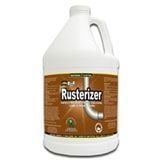 Rusterizer is a 100% biodegradable and organic option for cleaning rust from steel. It is perfectly safe for cleaning steel indoors and out, and is safe for all steel surfaces. Their website contains a very convincing video, demonstrating the effectiveness of this product.
Rusterizer is a 100% biodegradable and organic option for cleaning rust from steel. It is perfectly safe for cleaning steel indoors and out, and is safe for all steel surfaces. Their website contains a very convincing video, demonstrating the effectiveness of this product.
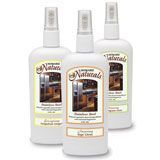 Howard Naturals Stainless Steel Cleaner & Polish is another great cleaning product made entirely from vegetable-derived ingredients. Use the stuff on all of your stainless steel appliances, stainless steel pots, stainless pans, and any other stainless steel objects that might need cleaning.
Howard Naturals Stainless Steel Cleaner & Polish is another great cleaning product made entirely from vegetable-derived ingredients. Use the stuff on all of your stainless steel appliances, stainless steel pots, stainless pans, and any other stainless steel objects that might need cleaning.